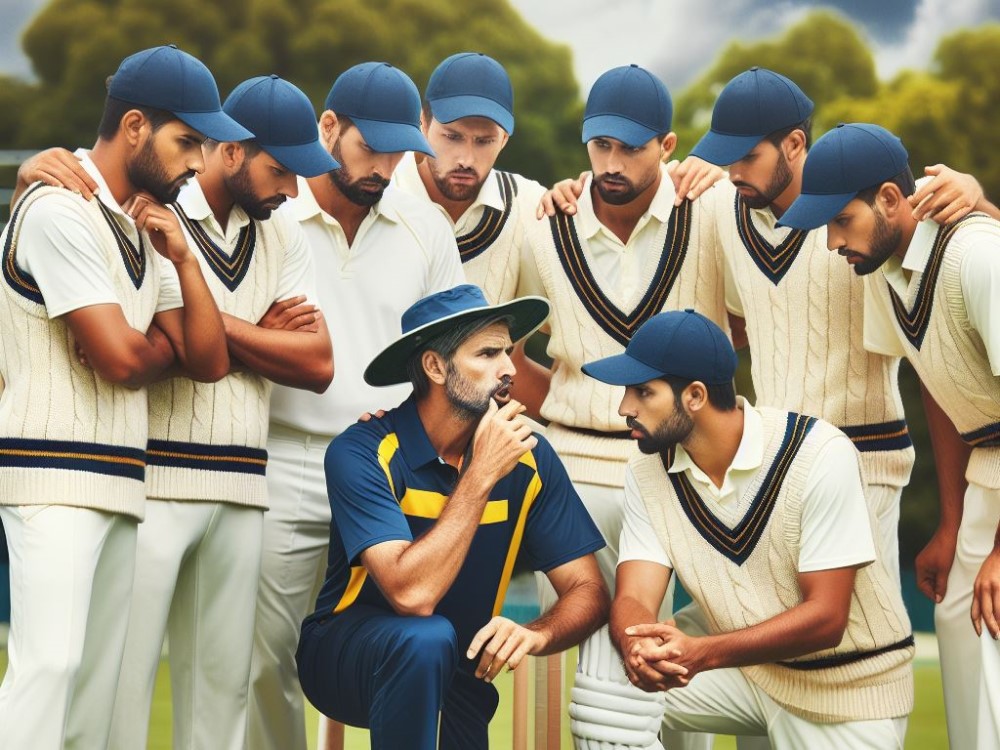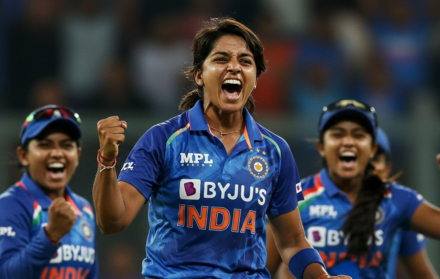
What Is The Role Of The Wicketkeeper
The role of the wicketkeeper in cricket is vital for the success of the team. The wicketkeeper has several responsibilities on the field that contribute to the overall performance of the team. Catching, stumping, run-outs, and communication are some of the key responsibilities of a wicketkeeper.
Catching is one of the primary responsibilities of a wicketkeeper. They must possess excellent hand-eye coordination and quick reflexes to take catches behind the stumps. Stumping is another crucial skill, where the wicketkeeper tries to dismiss a batsman by removing the bails while they are out of their crease. The wicketkeeper also plays an important role in executing run-outs by gathering throws quickly and efficiently to break the stumps.
Apart from these specialized skills, a wicketkeeper also serves as the communicator on the field. They are responsible for communicating with the bowlers and fielders, providing guidance, and assisting in field placements. Their ability to analyze the game situation and convey strategies makes them a valuable asset to the team.
To perform these responsibilities, a wicketkeeper needs to possess specific skills. Hand-eye coordination is crucial for effectively catching and stumping. Quick reflexes allow them to react swiftly to unexpected situations. Flexibility and agility are essential for diving and moving swiftly behind the stumps. Furthermore, effective communication skills help in coordinating with the bowlers and the rest of the fielding team.
The role of a wicketkeeper goes beyond the technical aspects of the game. A great wicketkeeper can have a significant impact on the team’s performance. They boost the morale of the team with their energy and enthusiasm, providing support and encouragement to the bowlers. They aid the bowlers by providing valuable insights and suggestions based on their observations. A skilled wicketkeeper contributes to team strategy by providing valuable input on field placements and tactics.
Cricket has seen some legendary wicketkeepers who have left a lasting impact on the game. Players like Adam Gilchrist, Kumar Sangakkara, and Mark Boucher are widely recognized for their exceptional skills and contributions to their respective teams.
Responsibilities of the Wicketkeeper

The Uniting the field with stellar catching, precise stumping, lightning-fast run-outs, effective communication, and strategic field placement.
Catching
Catching is a crucial skill for a wicketkeeper in cricket. It involves successfully catching the ball when a batsman edges it or when a bowler delivers a stump-out opportunity. The wicketkeeper’s ability to catch can greatly impact a team’s performance. Here’s a
outlining the key aspects of catching:To improve catching skills, wicketkeepers can practice drills that simulate different catching scenarios, working on hand-eye coordination and agility. Regular practice and feedback from coaches can help refine their catching technique.
Strong catching skills have the potential to create game-changing moments for a team, leading to victories.
Stumping
Stumping is a crucial responsibility of a wicketkeeper in the game of cricket. It involves a quick and skillful action to dismiss a batsman when they are out of their crease. Here are key aspects of stumping:
- Timing: The wicketkeeper must closely watch the movements of the batsman and anticipate the right moment to remove the bails.
- Footwork: Quick footwork is essential to gather the ball and remove the bails in a swift motion.
- Glove work: The wicketkeeper must have excellent hand-eye coordination and dexterity to gather the ball cleanly.
- Awareness: The wicketkeeper needs to be aware of the position of the batsman’s feet and judge whether a stumping opportunity is present.
Run-Outs
Run-outs are a vital aspect of a wicketkeeper’s role in cricket. They have a key role in dismissing batsmen and creating opportunities for the team. Here are some significant points to consider about run-outs:
- A run-out occurs when the wicketkeeper successfully breaks the stumps with the ball while a batsman is out of their crease.
- Wicketkeepers must have quick reflexes and excellent throwing accuracy to execute successful run-outs.
- Run-outs require effective communication and coordination with fielders to execute strategic plans and maximize chances of running the batsman out.
- A well-executed run-out can change the course of a match and provide a significant advantage to the team.
Communication and Field Placement
Effective communication and strategic field placement are fundamental skills for a wicketkeeper in cricket. These abilities allow the wicketkeeper to guide their teammates and make prompt decisions based on the game situation.
In the context of communication, the wicketkeeper plays a vital role by effectively communicating with the bowlers, offering valuable insights regarding the weaknesses of the batsmen and suggesting strategic bowling strategies.
Additionally, the wicketkeeper’s contribution extends to field placement, ensuring that fielders are strategically positioned to increase the likelihood of taking wickets. Through maintaining clear and constant communication and making astute decisions concerning field placement, the wicketkeeper significantly enhances the team’s overall performance.
Skills Required for a Wicketkeeper

A wicketkeeper’s role involves much more than just catching the ball behind the stumps. In this section, we’ll explore the essential skills required for a wicketkeeper to excel in their position.
From razor-sharp hand-eye coordination to lightning-quick reflexes, the wicketkeeper must possess a range of abilities. The keeper’s flexibility, agility, and effective communication with the team are crucial aspects we’ll delve into. So, let’s dive into the key skills that make a wicketkeeper a force to be reckoned with on the cricket field.
Hand-Eye Coordination
Hand-eye coordination is an essential ability for a wicketkeeper in cricket. It is vital for them to react swiftly and accurately to the movements of the ball. This skill allows the wicketkeeper to successfully catch balls that are coming at high speeds or make prompt stumping decisions.
A wicketkeeper with remarkable hand-eye coordination can also contribute to run-outs by swiftly gathering the ball and hitting the stumps. This skill not only enhances the technical aspects of the game but also uplifts the team’s morale, as their wicketkeeper demonstrates exceptional reflexes and agility.
Renowned wicketkeepers like Adam Gilchrist and Kumar Sangakkara have consistently showcased extraordinary hand-eye coordination throughout their careers.
Quick Reflexes
Quick reflexes are vital for a wicketkeeper in cricket as they enable them to react promptly to fast-paced deliveries and execute agile movements behind the wicket. Here are some essential elements of quick reflexes for a wicketkeeper:
- Anticipation: Being able to read the bowler’s delivery and anticipate the direction of the ball helps the wicketkeeper position themselves for a swift reaction.
- Glove Work: A wicketkeeper with quick reflexes can effortlessly move their gloves to make catches or attempt stumpings.
- Recovery: Quick reflexes empower the wicketkeeper to recover from even the slightest deflections, ensuring they can make crucial saves and thwart runs.
Throughout cricket history, wicketkeepers with outstanding quick reflexes have made remarkable saves and dismissals, establishing themselves as invaluable assets to their teams. One notable example is Adam Gilchrist, renowned for his lightning-fast reactions and breathtaking catches behind the wicket.
His quick reflexes often led to vital breakthroughs for his team.Flexibility and AgilityFlexibility and agility are paramount qualities for a wicketkeeper in the game of cricket. The capacity to swiftly move and alter direction is indispensable for successfully catching balls and executing quick stumpings or run-outs.
A wicketkeeper with exemplary flexibility can extend their body to reach wide deliveries and accomplish challenging catches. Agility enables them to react promptly to the unpredictable movements of the ball or the batsman.
Communication

Good communication is a crucial skill for a wicketkeeper. They need to effectively communicate with the bowler and fielders to ensure proper field placement and strategy. Communication plays a vital role in coordinating run-outs and making quick decisions in dynamic situations.
The wicketkeeper needs to provide constant updates and information to the captain and keep the team morale high by encouraging and motivating the players. Effective communication enhances teamwork and coordination, leading to improved performance on the field.
It is essential for a wicketkeeper to cultivate strong communication skills to excel in their role.
The Importance of a Great Wicketkeeper
A great wicketkeeper can be the game-changer your team needs!
They not only boost morale but also aid the bowlers and contribute to team strategy. With their sharp reflexes and strategic insights, wicketkeepers play a crucial role in cricket.
So, let’s dive into the importance of a great wicketkeeper and discover the ways they impact the game on multiple fronts!
Boosting Morale
A wicketkeeper plays a vital role in boosting the morale of the team.
Here are some ways they contribute:
- Providing encouragement: A wicketkeeper is always in the thick of the action, constantly supporting and motivating their teammates.
- Celebrating successes: When a wicketkeeper takes a catch or executes a stumping, it creates a sense of excitement and energy among the team.
- Boosting team spirit: By being vocal and engaging, the wicketkeeper helps create a positive and unified team environment.
- Offering guidance: Wicketkeepers often have a good understanding of the game, providing valuable insights and advice to the bowlers, fielders, and captain.
A great wicketkeeper can significantly impact team morale, contributing to a positive and winning mindset.Aiding the BowlersThe role of the wicketkeeper in cricket goes beyond just catching the ball and recording dismissals. A skilled wicketkeeper can significantly aid the bowlers in various ways.
Here are some ways a wicketkeeper can assist the bowlers:By skillfully aiding the bowlers in these ways, a wicketkeeper becomes an invaluable asset to the team’s bowling attack, aiding the bowlers.
Contributing to Team Strategy
Contributing to team strategy is an integral part of a wicketkeeper’s role in cricket. They have a vital role in shaping the team’s approach and game plan. Here are several ways in which the wicketkeeper contributes to the team strategy:
- Communication: The wicketkeeper serves as the captain’s primary communicator on the field, relaying messages and instructions to teammates.
- Field Placement: They assist the captain in arranging the field for different bowlers and situations based on their understanding of the batsmen and pitch conditions.
- Analyzing the Game: The wicketkeeper continuously observes the opposing team’s batsmen, identifying their strengths and weaknesses and offering valuable insights to the captain and bowlers.
- Strategy Execution: They work closely with the bowlers to implement specific plans, such as creating pressure, setting up dismissals, or utilizing variations to deceive the batsmen.
By actively contributing to team strategy, the wicketkeeper maximizes the team’s chances of success on the field.
Famous Wicketkeepers in Cricket

In the world of cricket, famous wicketkeepers play a crucial role in the game. They are responsible for various tasks, including catching the ball, stumping the batsman, and providing feedback to the captain.
Some famous wicketkeepers in cricket history include:
These famous wicketkeepers have left a lasting impact on the game with their exceptional skills, leadership, and contributions to their respective teams.In the early days of cricket, wicketkeepers had a different role.
They primarily served to protect the wickets and prevent the batsman from making runs. Over time, their role evolved to become more involved and dynamic, influencing the course of matches with their skills and presence behind the stumps.





